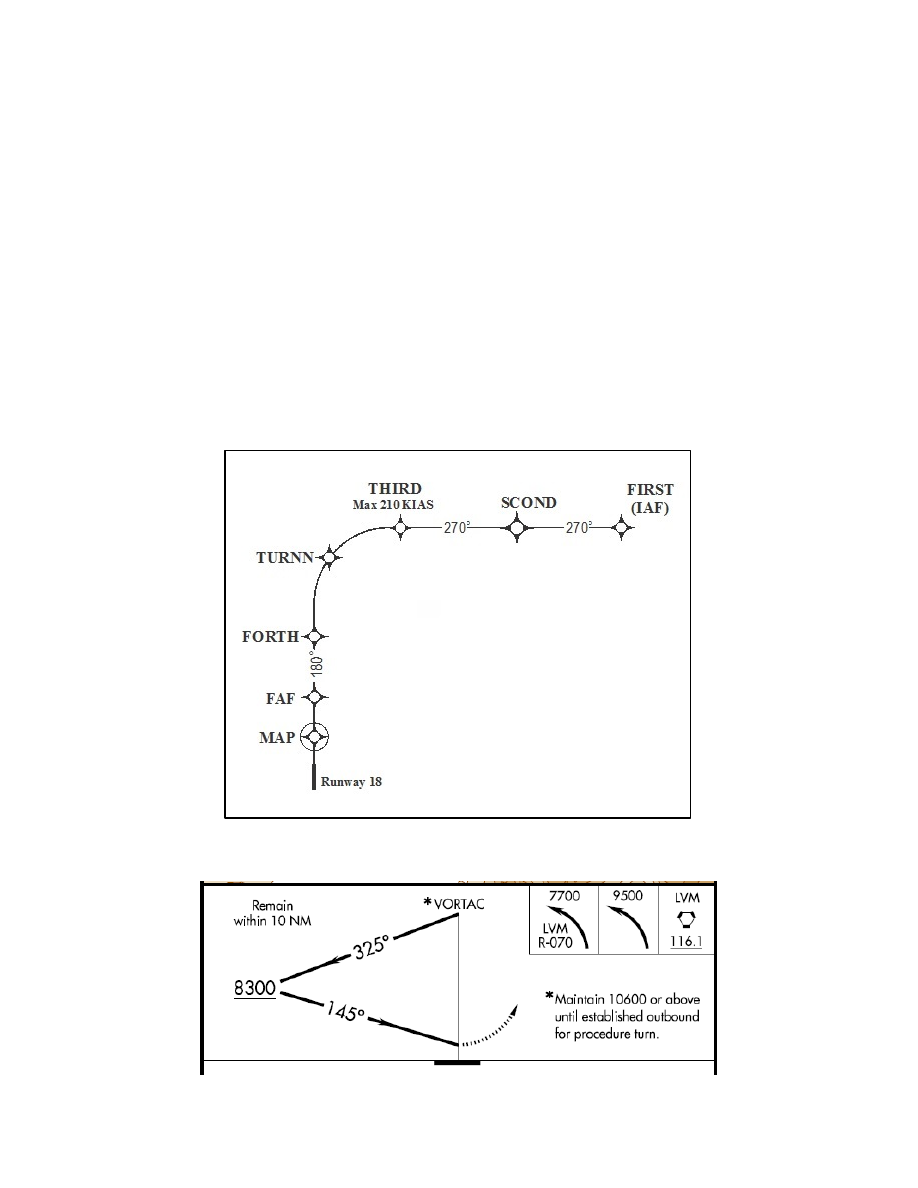
4/20/23
AIM
of the pilot (limited by the charted remain within xx NM distance). Some of the options are the 45 degree
procedure turn, the racetrack pattern, the teardrop procedure turn, or the 80 degree
260 degree course reversal.
Racetrack entries should be conducted on the maneuvering side where the majority of protected airspace resides.
If an entry places the pilot on the non
−
maneuvering side of the PT, correction to intercept the outbound course
ensures remaining within protected airspace. Some procedure turns are specified by procedural track. These
turns must be flown exactly as depicted.
2.
Descent to the procedure turn (PT) completion altitude from the PT fix altitude (when one has been
published or assigned by ATC) must not begin until crossing over the PT fix or abeam and proceeding outbound.
Some procedures contain a note in the chart profile view that says “Maintain (altitude) or above until established
outbound for procedure turn” (See FIG 5
16). Newer procedures will simply depict an “at or above” altitude
at the PT fix without a chart note (See FIG 5
17). Both are there to ensure required obstacle clearance is
provided in the procedure turn entry zone (See FIG 5
18). Absence of a chart note or specified minimum
altitude adjacent to the PT fix is an indication that descent to the procedure turn altitude can commence
immediately upon crossing over the PT fix, regardless of the direction of flight. This is because the minimum
altitudes in the PT entry zone and the PT maneuvering zone are the same.
FIG 5
−
4
−
15
Example of an RNAV Approach with RF Leg
FIG 5
−
4
−
16
Arrival Procedures
5
−
4
−
33